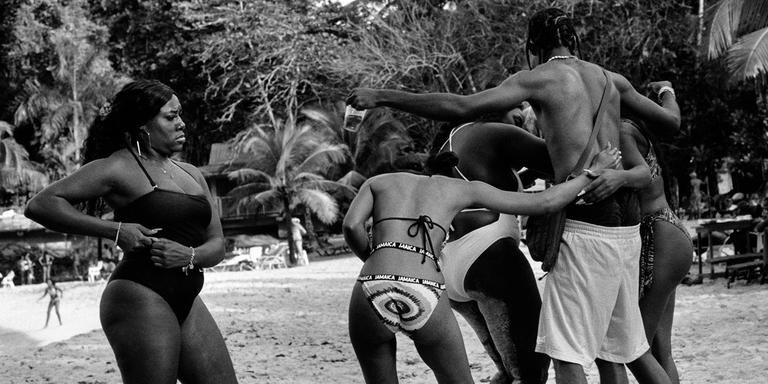


Jeano Edwards captures 'everyday beauty' of a Jamaican vacation
In picturesWhen photographers explore their roots, their vision is often colored by nostalgia, fantasy, surprise and more. Since 2018, Jamaican-born Jeano Edwards, who left the island at age 16, has spent every vacation roaming the land of his youth.
What binds 30-year-old Jeano Edwards to Jamaica? "An ever-changing sense of belonging." A native of St. Thomas, in the southeast of the island, Edwards left his homeland at the age of 16 to settle with his family in the Hudson Valley, near New York City. But he has never abandoned the "deep love, sometimes tinged with nostalgia" that connects him to the island.
Since 2018, he has returned there every summer, in his role as a photographer. In the beginning, it was like a self-imposed "annual exercise" of creating images to "define different ways of examining [his] identity and deconstructing a very complex cultural aesthetic."
It didn't take long before the idea of putting them all together in a book began to take hold. So it was that EverWonderful was born. Initially self-published with its own layout, the book quickly sold out and was then reissued in 2021. "It's a narrative experience in which I want to engage readers, with the hope that the book will be a fragment of 'home' for anyone who owns a copy," said the photographer, who now lives between Brooklyn and Paris. The title was inspired by the 1959 tune "Be Ever Wonderful," by American bluesman Ted Taylor.
Intimate connection
EverWonderful: These words sum up Edwards' affection for Jamaica. The feeling of exile? For him, it is about "feeling very connected to a place, while sensing the transience of that connection and the need to hold it firmly: That's why so much of my work is based in Jamaica. It's a way of reinforcing my relationship with my homeland, while exploring all the nuances that this distance creates."
What if he had stayed there? He probably never would have embarked on a career in photography, he admitted. "It was this experience of being split in two during my formative years that enabled me to do what I do today."
Dedicated to his mother, with whom he had never dared to share his work prior to publication, the book unfolds like a diary of heartfelt nostalgia. It also attempts to resist any exotic inclinations. "My aim was to create a more nuanced aesthetic than the usual clichés of my island," he explained.
Identity in the making
As a result, each image says "just enough, nothing more": the flight of cormorants, the harsh line of a barbed wire fence, a dive, a shoreline, a waterfall, a few grains of sand on the lower back, the scent of honey, the exuberance of bougainvillea or rust on a banana leaf. The gentle continuous flow is dotted with faces, with glances that are sometimes misty and bodies delighting in the languor of the beaches.
You have 44.77% of this article left to read. The rest is for subscribers only.
